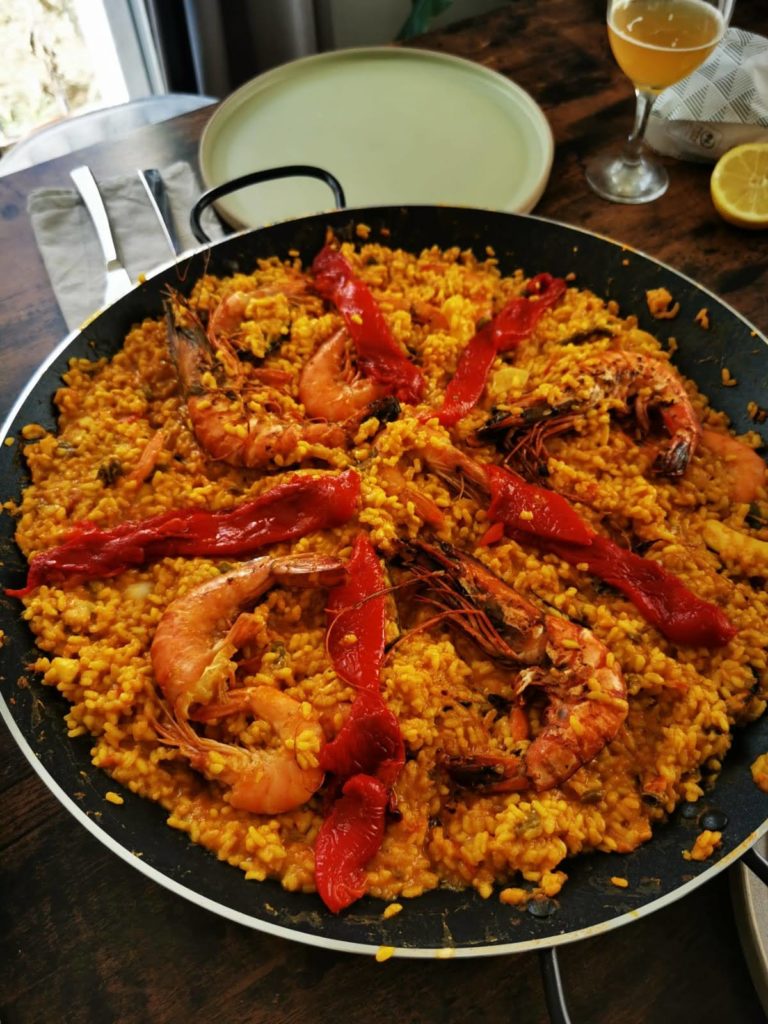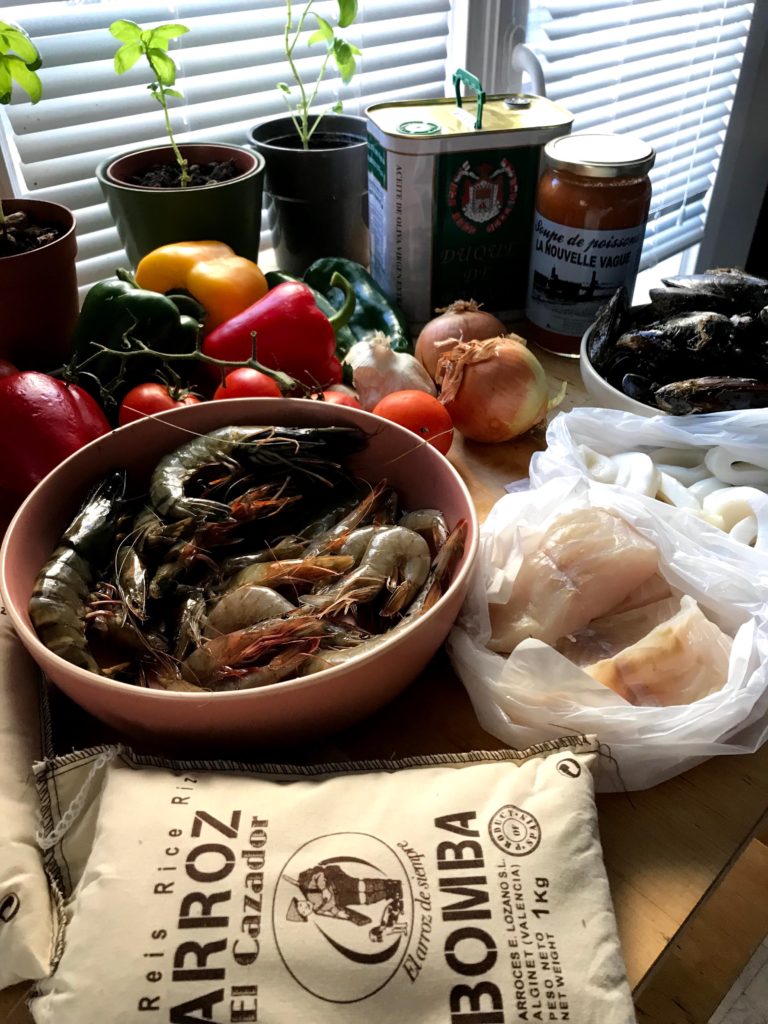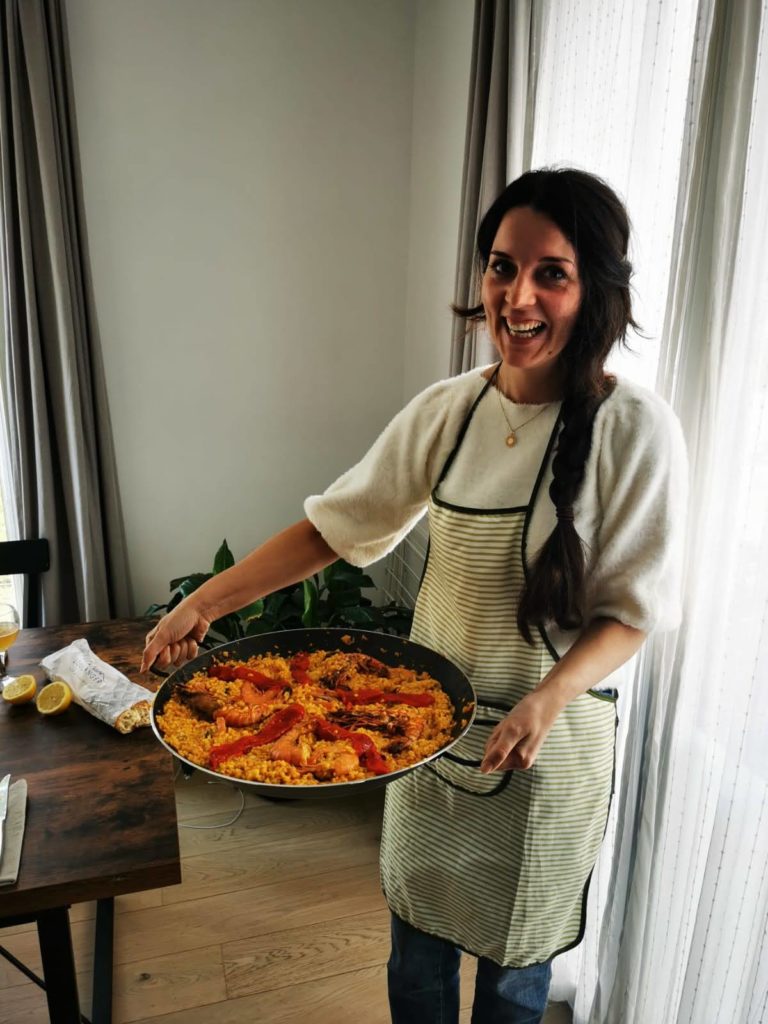Curiosities about paella
Do you know where paella comes from? From the rice fields around the Albufera Lagoon in Valencia.
The word “paella” comes from Valencian Catalan language and means “frying pan”. It arose five centuries ago and was a collective dish that the humble workers cooked over wood fires, preparing it with whatever they had on hand: snails, eels, green beans or any seasonal vegetable… Over time, in every village in Valencia or Murcia ( region just next to Valencia), all kinds of meats were added to the paella: chicken, rabbit, fish, seafood… Today paella is still eaten only with wooden spoons in some villages in Valencia, as the working classes who created it did not use metal cutlery back then.
The paella pans are large enough to cook the rice without forming thick layers (normally you do not want it to be more than 1 cm thick or the equivalent of a finger, but it depends on the Autonomous Community in which it is prepared). The toasted bottom layer is called “socarrat”.

My Mother’s recipe
Although the original paella recipe does not include seafood and the Valencians call it “arroz con cosas o a la marinera”, my mother’s paella is very good and that’s how we eat it at home on Sundays.
The question is that if it is a Sunday dish, why do the bars in some communities in Spain prepare it on Thursdays? Apparently one hypothesis is that Franco used to go out in Madrid on Thursdays in search of some aimless restaurant. As a good paella lover, he expected to find it on the menu wherever he went, so the bars and restaurants in Madrid made sure to cook it every Thursday in case Franco passed by their tables.

Paella Ingredients
- Paella pan.
- Seafood: chopped squid rings, mussels, prawns, shrimps, white fish cut boneless.
- Vegetables: tomato, green and red pepper, onion (all chopped) and 2-3 cloves of garlic. Roasted peppers to decorate the paella.
- Rice: within the Valencia denomination of origin there are three main varieties (Senia, Bomba and Albufera), the one I use is Bomba because it holds up well to cooking, but risotto rice could also be used. 1 cup of rice is used for every two people.
- Fish or seafood stock. Soup can also be used but should be strained if it is too thick. 2 cups of broth are used for each cup of rice.
- Others: white wine or beer, a few strands of saffron, colouring, lemon, salt and olive oil.
Preparation of the paella
- Fry the onion and peppers in olive oil
- Add the tomato and garlic.
- Boil the mussels and do not throw away the water. Keep them to make the rice and remove one of their parts to use them as decoration at the end.
- When they are golden brown, add the squid, the fish and a little salt.
- Now add the rice , then some wine or some beer.
- The fish stock is poured in as the rice cooks, if more liquid is needed when the stock runs out, use the water from the mussels.
- Add the saffron, the colouring, the lemon juice and finally the seafood. You can also cook apart the seafood (prawns, mussels and shrimps) and add them at the end when the rice is almost ready to prevent them from being raw.
- When the rice is soft but not mushy, turn off the heat and cover with aluminium foil or a damp cloth for 5-10 minutes.

Tips for making paella
- Do not overload the paella pan with seafood, as it is the rice that takes centre stage and is infused with the flavour.
- The rice must not exceed the height of the paella pan handles.
- Bring the broth from the paella to the boil while it is cooking. Start on a high heat and then lower it so that it reduces.
- Use several hotplates or induction hobs at the same time so that the heat arrives as evenly as possible, or move the sides of the hob to the centre of the fire so that it heats up on all sides. Ideally, it should be done with a butane paella cooker.